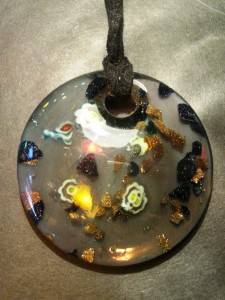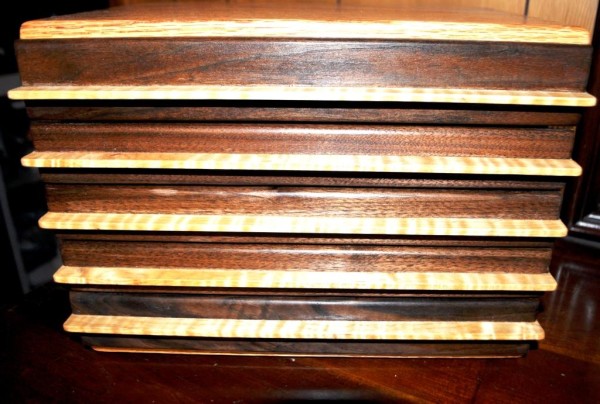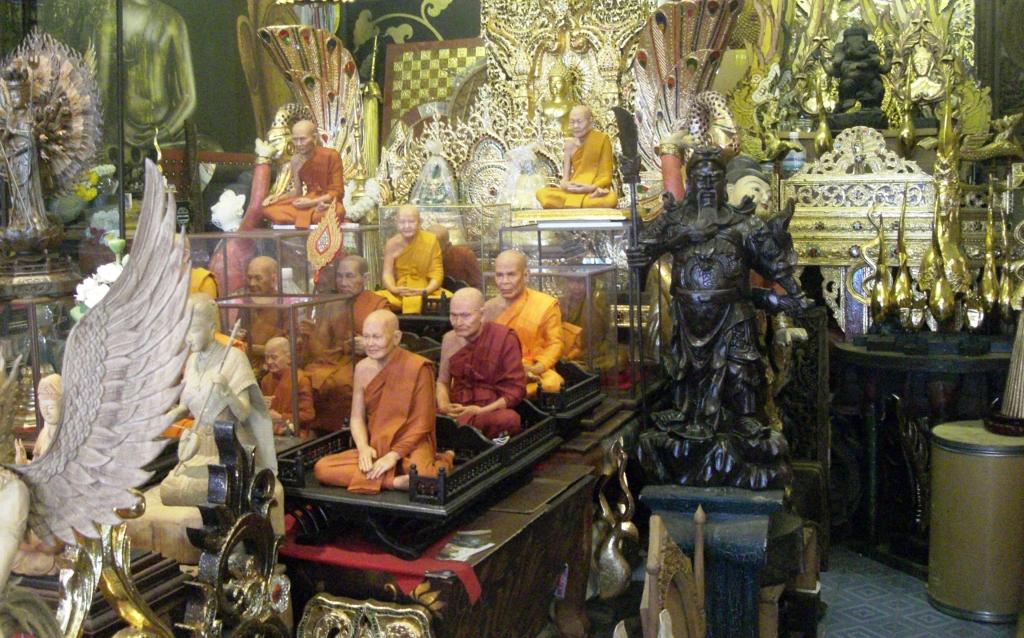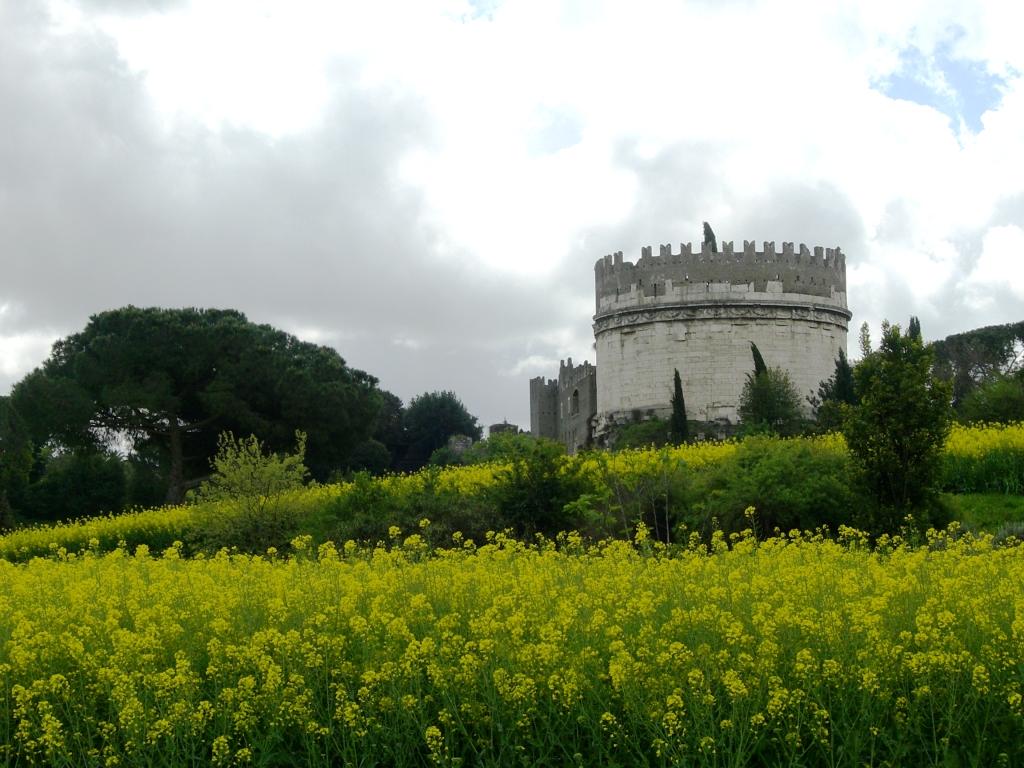Shopping is one of the premier activities people do when traveling. According to the U.S. Travel Association, shopping ranks second in travel activities — just behind visiting family, and in front of visiting friends, going to restaurants, and visiting the beach.
I have often been one of those tourists, which is strange because normally I detest shopping. I will try to squeeze into a pair of jeans from 1993 before venturing into a shop for a new pair. Travel, however changes all that.
I’m thinking about that at the moment because I’ve just returned from Branson, Missouri (think music shows for grandma and the family, God and country, fishing, and a riverboat with no gambling). Waiting for me was a package containing a wooden box, which I had bought in Branson and decided to ship for $25 because I didn’t want to pay the airline $25 to check my luggage.
Some background: Branson attracts some 7 to 8 million visitors a year, mostly for the shows and the fishing, but there’s plenty of shopping, and much of it revolves around high-quality traditional American crafts. At Silver Dollar City — a theme park complete with rollercoasters, junk food, barbecue, and country music at every bandstand — scores of workshops showcase artisans who make and sell one-of-a-kind crafts from glass blown on the premises to leather goods to pottery to hand-made knives to some of the most finely made wooden furniture I’ve ever seen. A lso candles and home-made candy and lye soap and hand-sewn rag dolls. There’s a bit of a hokeyness factor (gingham pioneer costumes) but the soap maker who gave me a hunk of sweet-smelling almond lye soap has been working at the craft for more than 40 years; if nothing else, I’m pretty sure this is the most competently made bar of soap I’m ever going to have the pleasure of using. More than that, though, despite some undeniable kitch, everything I saw felt genuine, local, and authentic — connected by tradition to the region and the people who live there.

And this feeling, this connection — through a trinket for me or a gift bought for someone else — is the reason I love to shop when I travel. Not for T-shirts and baseball caps, not for coffee mugs and refrigerator magnets. But put me in an amber store in the Baltic or a pearl farm in Tahiti; let me wander around a wood carving factory in Mombasa, Kenya, or (god help me) a rug maker’s lair in Turkey, and my credit card starts to vibrate. My treasures are modest: a small metal Buddha from Thailand, an alabaster vase from Egypt, drums from Africa, painted wooden ornaments from Russia, masks and beads from everywhere.

cooperative in a Mayan village.
I like buying from the crafters themselves. My Ugandan drums, my Greek baglama, a Hawaiian canvas print of a photograph, a Fijian necklace of pearls and crabshell parts: All were all sold to me by the people who made them. Often, I buy from a relative or friend of the artisan; someone who can tell me a story. Or at the very least, I buy objects, like cookware or an instrument, that are used locally, and get instructions on how to use it by a salesperson who has one just like it at home. Somehow, these stories imbue these inanimate objects with a history, with a life, with a connection between me and a place I was fortunate enough to touch for a short while and may never see again.
Many ravel writers eschew writing about travel They are looking for loftier stories, and often, they bring home tales about war memorials that make me cry, about religious sites that put me in a state of awe, about ecotourism projects that give me hope for the planet. I seek out those stories too, but when my brain hurts from the pain of describing a World War II cemetery, or when I run out of adjectives with which to describe the Himalayas or the High Sierra, I turn to shopping for those small, unique objects that decorate the lives of people in a hundred countries.

So, back to my box: I found it while wandering around a shop in Branson Missouri. A modest collection of jewelry boxes sat on a table, all different, all priced ridiculously reasonably. It took about three seconds before one of the boxes told me I was going to take it home. Resistance was useless; I couldn’t look away. It took another 10 minutes to work out whether I could really afford a hand-made jewelry box, and could I ship it so I didn’t have to cram it into my carry-on luggage.
The salesperson told me that the boxes were all made by an 85-year-old man named Roland who lives in the nearby Ozarks. He carves the boxes, and when he makes enough to fill a laundry sack, he brings the sack to the store and the store sells the boxes. All the boxes are different — different sizes, designs, types of wood. The workmanship is impeccable: tongue-and-groove corners, carefully lined trays, a smooth sanded finish. On the bottom of each, he signs his name, dates the box, and writes in what type of wood he used. My credit card started to vibrate. The salesperson said they’d be happy to ship.
The box came yesterday. On the bottom is Roland’s signature, with the year and a note that my box is made of walnut, ash, and maple. It has pride of place on my dresser, where fittingly, it houses the various beads and baubles I have brought back from countries around the world. It, and my many other small treasures, reminds me that there is beauty to be found everywhere, and that one of the things we have in common as humans is the desire to surround ourselves with art and traditions that brighten our lives and connect us with each other.
Interested in shopping the world? Check out our shopping section to find out what to buy in your next destination. Or look at the pictures on our Pinterest board.




You have nailed exactly what makes a shopper out of me whenever I travel. Me, who waits until my favorite blouse is fraying at both collar and cuffs before I set foot in a mall!